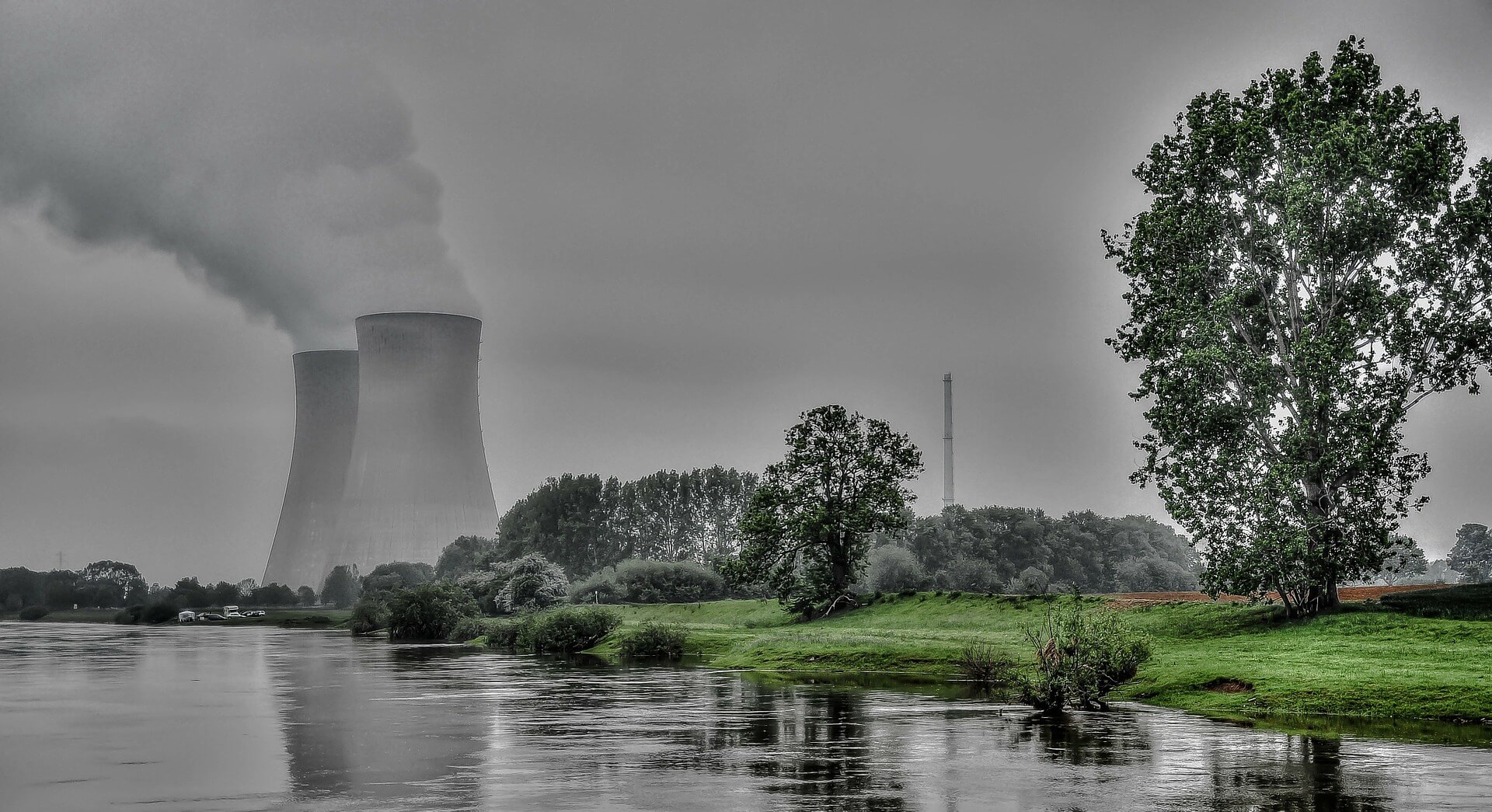Energy Density
Nuclear energy taps into the forces that hold atoms together to make heat. That heat can to be used to spin generators to make electricity or harnessed for industrial processes. Because these nuclear “strong forces” that bind atoms together occur at such a low scale, a lot of energy is packed into a very small space (up to 100 million times the energy density of other sources). This high density is what makes nuclear energy unique and particularly valuable. It is also what makes it potentially dangerous if employed as a weapon or subject to an accident. Unfortunately, over the years there seems to have been more emphasis on those potential problems than on the valuable contributions that nuclear energy can make as part of an “all of the above” energy security portfolio.
There are lots of ways to generate electricity. One of the most commonly used methods involves the chemical reaction of combusting hydrocarbons to make heat to spin generators. Other methods involve the use of gravity to move water from one level to another. We tap into photovoltaics that use sunlight to directly release electrons, capture and intensify heat from the sun to spin generators, and use the movement of the wind or the tides to generate electricity. Every form of electricity generation has its issues. Fossil fuels have emissions that may harm the environment. Hydropower sometimes requires damming rivers that makes land inaccessible. Renewable energies can be inefficient and intermittent when the sky is cloudy or the wind is not blowing.
Nuclear energy, like all other forms of electricity generation, has its pros and cons. Perhaps the most important feature in favor of nuclear energy is its energy density. For example, the nuclear core of a light water-cooled and moderated 1000 megaWatt (electric) nuclear reactor is only about 12 feet tall and 10 feet wide and the fuel for such a reactor will last for about four and a half years. Other lower power reactors, using different cooling and moderation, can be quite a bit smaller. There are currently designs for 10 megaWatt (electric) reactors that are about the size of a trash can and can be transported in a shipping container with the necessary radiation shielding. These reactors can be autonomous and load following. It would literally take hundreds of train cars of coal or hundreds of acres of solar panels or wind farms to generate equivalent amounts of electricity as these small reactors.
Of course, the advantages of the high energy density of nuclear are also part of its challenges. The reality is that a good deal of the basic understanding of nuclear energy technology was born during wartime in search of a “super weapon.” Used in a weaponized way, nuclear energy can pack the equivalent of millions of tons of TNT in a small package that can be delivered on top of a missile. Nuclear weapons have been used in war only twice and the effects were so devastating that the world tries its best to carefully control who gets the technology.
Along with the weapons issue, there are also other safety concerns. Accidents involving nuclear energy are rare. There have been only three major accidents in over 60 years of use (Three Mile Island, Chernobyl, Fukushima). However, the consequences of a nuclear energy accident, both real and perceived, are so significant that civilian reactors require multiple layers of expensive safety systems. The waste generated by nuclear reactors is highly radioactive. Some of these waste products are very energetic and potentially harmful, but decay to a safe level of radiation very quickly. However, other waste products have low levels of energy and can be easily shielded, but take a very long time (thousands of years) to decay.
Levelized Cost of Electricity
One of the greatest challenges for valuing nuclear energy is known as the Levelized Cost of Electricity (LCOE). This is a commonly used method of comparing one source of electricity to another. LCOE is defined by the U.S. Energy Information Agency (EIA) as “the per-kilowatt hour cost (in discounted real dollars) of building and operating a generating plant over an assumed financial life and duty cycle.” LCOE is intended to allow a fair comparison of coal plants to photovoltaics to hydropower to nuclear energy plants. As with many things in life, LCOE is not always necessarily fair, particularly when valuing nuclear energy, as it emphasizes its disadvantages while not valuing its advantages.
Dealing with the safety, weaponization, and waste disposal challenges of nuclear energy is very expensive, and these costs directly raise its LCOE. However, the LCOE calculation tends not to value the main advantage of nuclear energy: its ability to pack a lot of very reliable power in a very small space. The LCOE somewhat accounts for this by valuing the relatively lower long-term fuel costs and space requirements for nuclear energy. However, these cost advantages are overwhelmed by the costs (especially initial capital costs) of security, safety systems and structures, and waste disposal. To make matters worse, the disadvantages of other type of electricity generation are often not accounted for in LCOE. These might include the particulates released by burning coal, the intermittent nature of wind and solar, or the environmental impact of hydropower.
Another important value of nuclear energy that is not accounted for by LCOE is the important role that civilian nuclear energy plays in promoting the national security of the United States. This occurs in several ways. One is the engagement that civilian nuclear energy allows for the U.S. in international forums. Other nations are working hard to grow their use of nuclear energy, which could lead to proliferation and safety issues that could impact the U.S. Continued engagement of the U.S. in international nuclear energy forums will allow the country to influence the discussions. Also, the U.S. Navy is dependent on nuclear energy for its submarines and aircraft carriers. A robust civilian nuclear energy industry helps to maintain the workforce and industrial base for these military uses. Over its long history, U.S. nuclear energy has generated huge numbers of well-paying high-technology jobs. Unfortunately, these intrinsic national contributions of nuclear energy do not readily appear in the strict accounting comparison of the value of one form of electrical generation to another.
The LCOE challenges for nuclear energy make it difficult for nuclear energy to compete against other “grid scale” methods of electrical generation. So what can be done? Clayton Christensen, author of The Innovators Dilemma, may offer some help. In this and other books, he writes of two types of innovation. The first is sustaining innovation, which occurs when companies make evolutionary innovations that continue to improve existing products for existing markets. The other type is known as disruptive innovation. This type of innovation either provides products of similar capabilities but at a much lower price, or develops products or services that engage new consumers who may be willing to pay a premium because of the products’ unique value. A classic example is Apple’s iPod, which delivered similar functionality (listening to music) at a much higher price, but in a completely different form.
Nuclear energy in the United States is reaching a critical stage. The “renaissance” that was predicted in the early 2000s did not occur. The widespread expansion of new nuclear plants is not happening. To make matters worse, existing operating plants are starting to close long before the end of their useful lives. A big part of the challenge for the grid scale cost competitiveness of nuclear energy is the relatively new abundant availability of natural gas from fracking. Some say that the United States is sitting on the Saudi Arabia of natural gas. This is good for America. Cheap, plentiful energy has always been an important part of what makes this country great.
The challenge is for U.S. civilian nuclear energy to find its role in the evolving energy marketplace. As Christensen might say, there does not seem to be much more sustaining innovation left for nuclear energy. The industry has worked very hard over the last 60 years to wring out inefficiencies. He would also likely advise that the opportunity for nuclear energy probably lies in finding disruptive innovations, such as finding ways to fundamentally change the cost structure of nuclear energy, or engaging customers who have never participated in the market.
Correctly valuing nuclear energy is important for the United States. This will require understanding and appropriate accounting for the real costs (and avoiding the imagined costs) of making nuclear energy safe and secure. An important part of that will be keeping the existing nuclear plants on line. The U.S. needs to understand why these plants are closing and ensure that the value the plants provide is accounted for in the decision to keep them or shut them down. It will also mean understanding and finding markets that are willing to pay for the higher costs of nuclear energy because of the value it provides. These could be higher margin businesses in the health care, high technology, or material industries that value compact, highly reliable sources of electricity or high-quality process heat. This also might include customers who are not connected to the electrical grid and would value the portability and independence of small reactors. An important part of enabling disruptive nuclear energy innovation will be maintaining, and in some cases rebuilding, the research and development infrastructure needed to understand performance and safety.
This year marks the 75th anniversary of Chicago Pile One (CP-1), which was the very first sustained artificial fission nuclear reactor. That achievement involved an international effort that was led by the United States. Ever since that event, the United States has played an essential role in leading the development of clean, safe, and reliable nuclear energy technologies. This created an important and valuable industry that generated huge numbers of jobs. The current path of nuclear energy in this country looks grim. However, this is exactly when Americans do their best to rise to the occasion. The United States needs to understand the real value of nuclear energy and find disruptive ways to capitalize on it. Doing this will provide the opportunity to find new ways of making existing nuclear technologies more affordable and new markets that are willing to pay for the value that nuclear energy can deliver. Nuclear energy has tremendous value and needs to be part of restoring the country’s future infrastructure.
Join the Catalyst Monitor
Join our community, where we push out regular insights to help maintain situational awareness on technological and socioeconomic trends.




